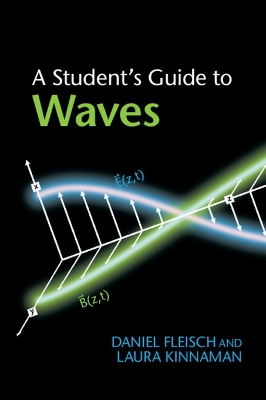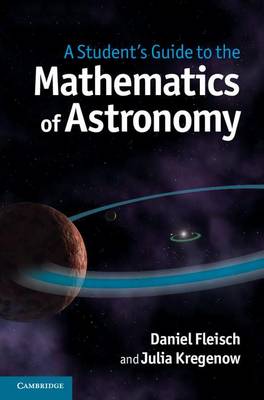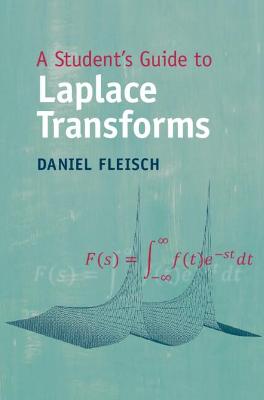Student's Guides
4 total works
Gauss's law for electric fields, Gauss's law for magnetic fields, Faraday's law, and the Ampere–Maxwell law are four of the most influential equations in science. In this guide for students, each equation is the subject of an entire chapter, with detailed, plain-language explanations of the physical meaning of each symbol in the equation, for both the integral and differential forms. The final chapter shows how Maxwell's equations may be combined to produce the wave equation, the basis for the electromagnetic theory of light. This book is a wonderful resource for undergraduate and graduate courses in electromagnetism and electromagnetics. A website hosted by the author at www.cambridge.org/9780521701471 contains interactive solutions to every problem in the text as well as audio podcasts to walk students through each chapter.
Waves are an important topic in the fields of mechanics, electromagnetism, and quantum theory, but many students struggle with the mathematical aspects. Written to complement course textbooks, this book focuses on the topics that students find most difficult. Retaining the highly popular approach used in Fleisch's other Student's Guides, the book uses plain language to explain fundamental ideas in a simple and clear way. Exercises and fully-worked examples help readers test their understanding of the concepts, making this an ideal book for undergraduates in physics and engineering trying to get to grips with this challenging subject. The book is supported by a suite of online resources available at www.cambridge.org/9781107643260. These include interactive solutions for every exercise and problem in the text and a series of video podcasts in which the authors explain the important concepts of every section of the book.
A Student's Guide to the Mathematics of Astronomy
by Daniel Fleisch and Julia Kregenow
Published 12 August 2013
The study of astronomy offers an unlimited opportunity for us to gain a deeper understanding of our planet, the Solar System, the Milky Way Galaxy and the known Universe. Using the plain-language approach that has proven highly popular in Fleisch's other Student's Guides, this book is ideal for non-science majors taking introductory astronomy courses. The authors address topics that students find most troublesome, on subjects ranging from stars and light to gravity and black holes. Dozens of fully worked examples and over 150 exercises and homework problems help readers get to grips with the concepts in each chapter. An accompanying website features a host of supporting materials, including interactive solutions for every exercise and problem in the text and a series of video podcasts in which the authors explain the important concepts of every section of the book.
The Laplace transform is a useful mathematical tool encountered by students of physics, engineering, and applied mathematics, within a wide variety of important applications in mechanics, electronics, thermodynamics and more. However, students often struggle with the rationale behind these transforms, and the physical meaning of the transform results. Using the same approach that has proven highly popular in his other Student's Guides, Professor Fleisch addresses the topics that his students have found most troublesome; providing a detailed and accessible description of Laplace transforms and how they relate to Fourier and Z-transforms. Written in plain language and including numerous, fully worked examples. The book is accompanied by a website containing a rich set of freely available supporting materials, including interactive solutions for every problem in the text, and a series of podcasts in which the author explains the important concepts, equations, and graphs of every section of the book.



